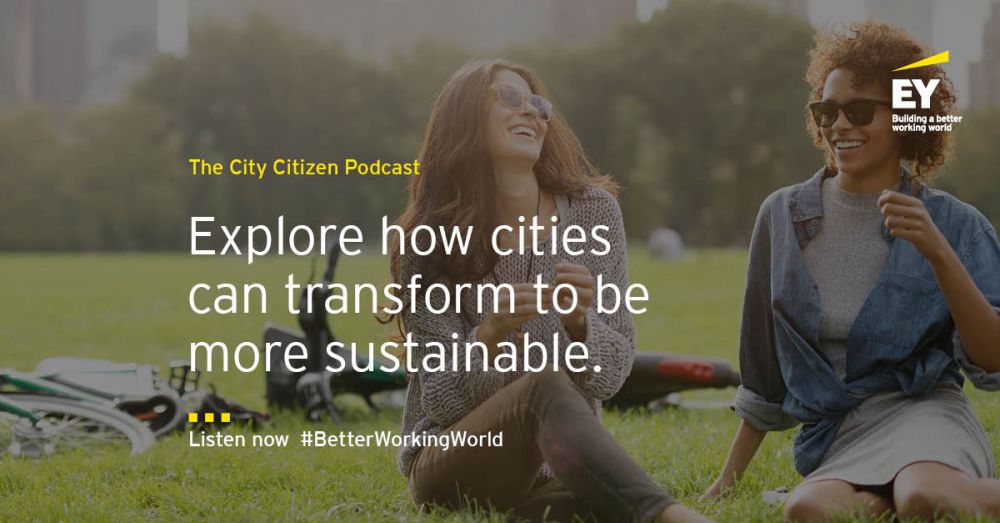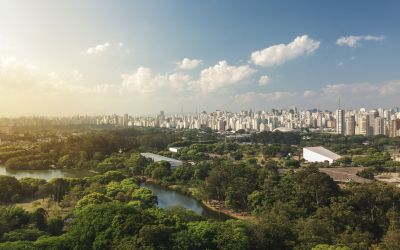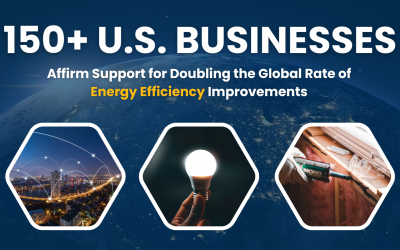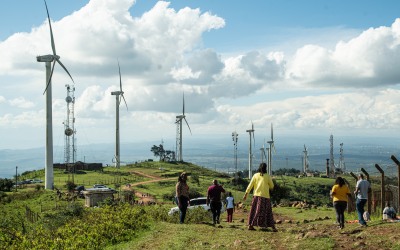Three ways leaders are addressing environmental and societal crises within cities
How can we best design our cities and prepare for the many challenges they will face in the years and decades ahead while also benefiting all of society?

How can we best design our cities and prepare for the many challenges they will face in the years and decades ahead while also benefiting all of society?
That is, perhaps, the most important question city leaders must answer and address right now ⏤ one that has become even more pressing given the experience of most urban dwellers during the recent global pandemic, and the way that climate change is increasingly starting to impact all our lives.
With this in mind, EY is collaborating with city leaders from across the globe on a new podcast, The City Citizen ⏤ a multipart exploration of the ways that cities around the world are undertaking transformative regeneration and pursuing a just transition to achieve a sustainable and low-carbon future.
In talking with city leaders from as far afield as Sweden, Australia, North America, Turkey, Poland and the Caribbean, three important trends emerge that provide best practice thinking for other urban governments.
Collaboration
The first is the need for public and private sector collaboration. Recently, we’ve seen the emergence of city governments working with the private sector, entrepreneurs and academia on urban regeneration projects. Their success depends in part on funding the private sector brings but also on the creative thinking, diverse perspectives and innovation these different partners can offer.
Citizen engagement
Involving citizens in city ecosystem planning is another important theme. We’ve seen a number of leaders who want to set a precedent and prove that it is possible to roll out small programs that are designed by and for all people in the community, sometimes to meet very specific needs. By giving citizens a sense of ownership from idea through execution, leaders can build greater consensus and buy-in to the sort of ambitious and sustainable development projects that might otherwise have faced public scepticism or opposition.
Green space and biodiversity
Increasingly, city leaders are focusing more on the importance of nature and biodiversity in mitigating the effects of climate change, boosting urban quality of life and maintaining physical and mental health. That can take the form of increasing urban tree cover and creating new green spaces or community gardens, especially in economically deprived neighborhoods that traditionally have been had less access to these facilities.
These are just three of the evermore urgent and prevalent trends shaping the future direction of our cities. However, all involve taking a different and bold approach to engaging with citizens, listening to their needs and then working together to find solutions.
I believe the sustainability policies and innovation shaped by city leaders will have a significant influence on how the rest of world acts because mayors and other city leaders find themselves on the front lines of so many issues that define modern life, including the climate crisis, the digital divide, and social equity and diversity issues.
If you’d like to explore more about how cities can become better places to live, work and play, come and listen at The City Citizen.
The views reflected in this article are the views of the author and do not necessarily reflect the views of the global EY organization or its member firms.


_400_250_s_c1.png)



